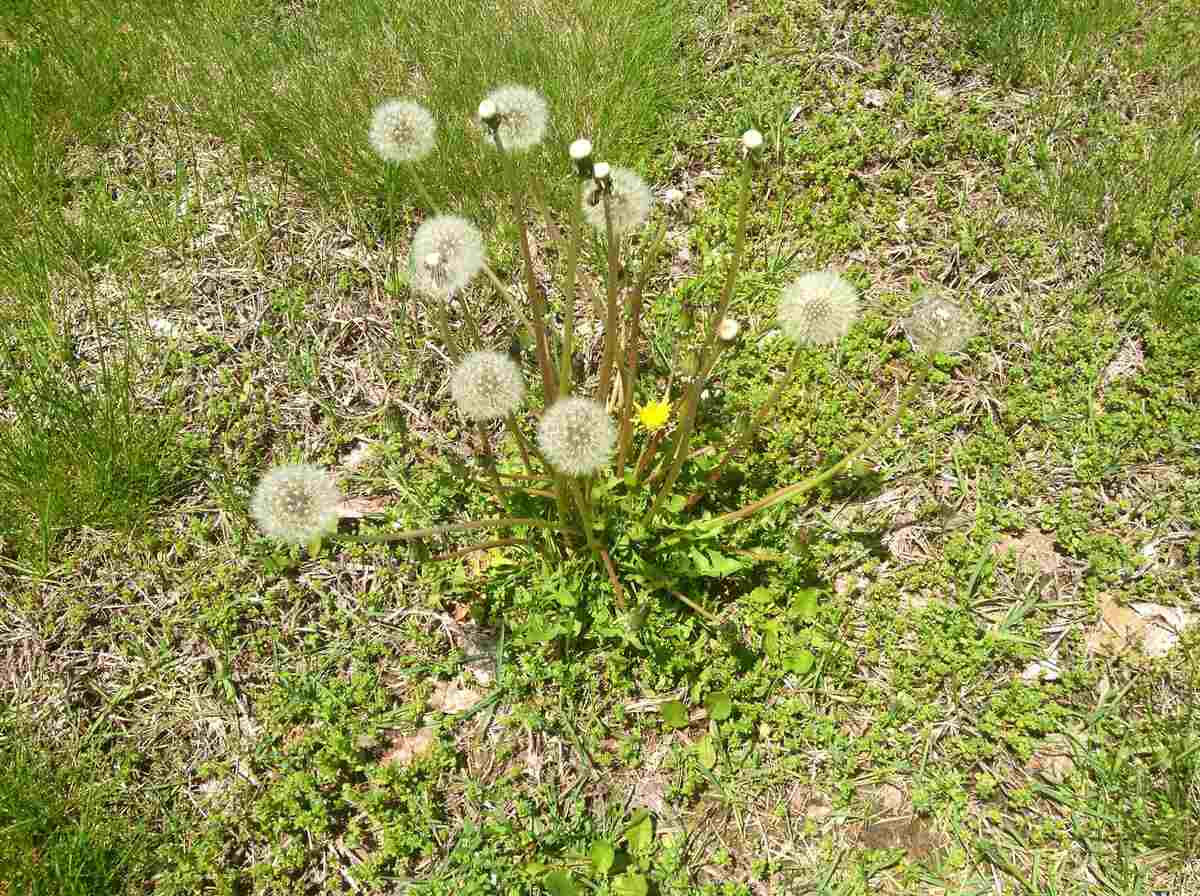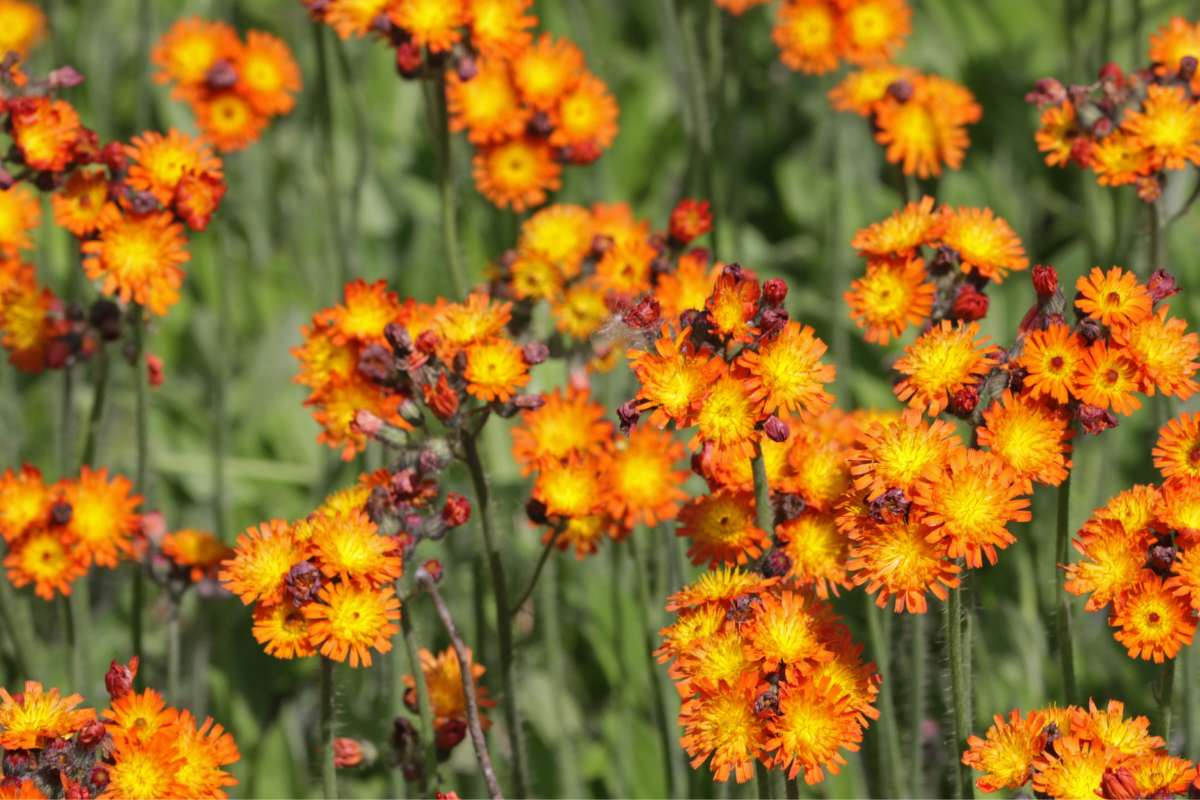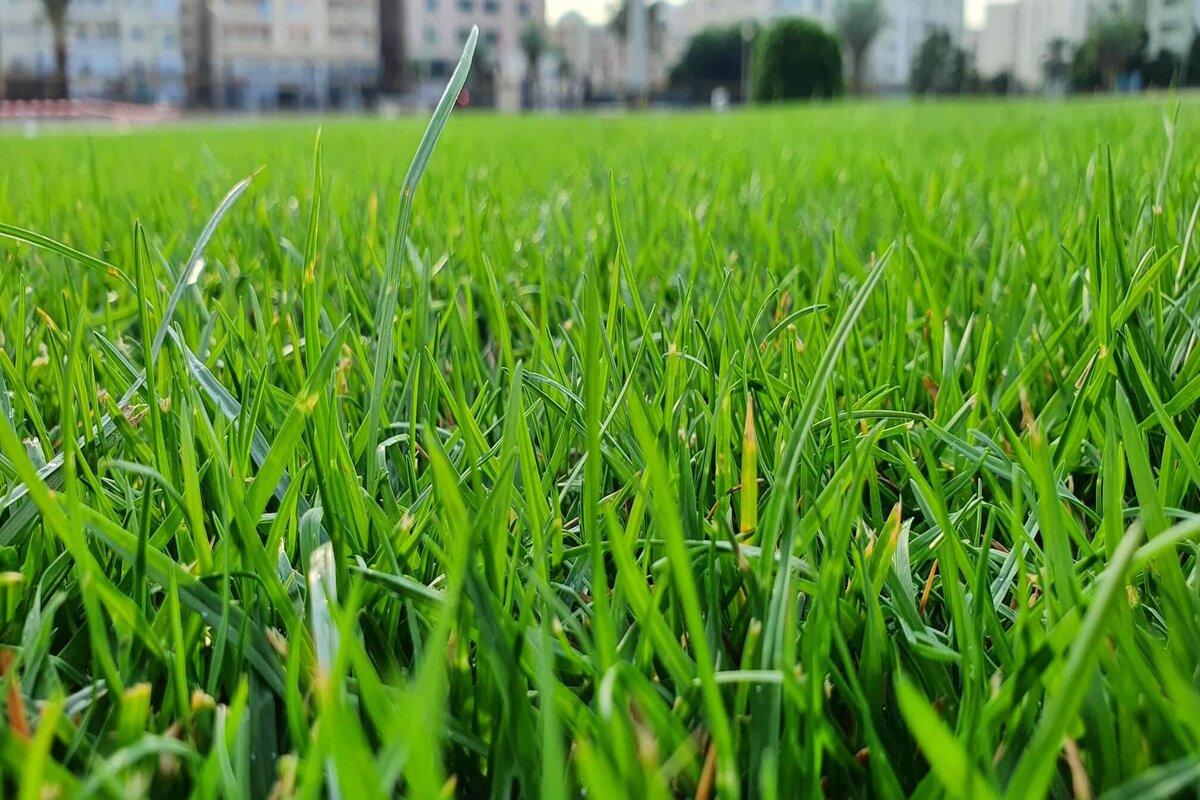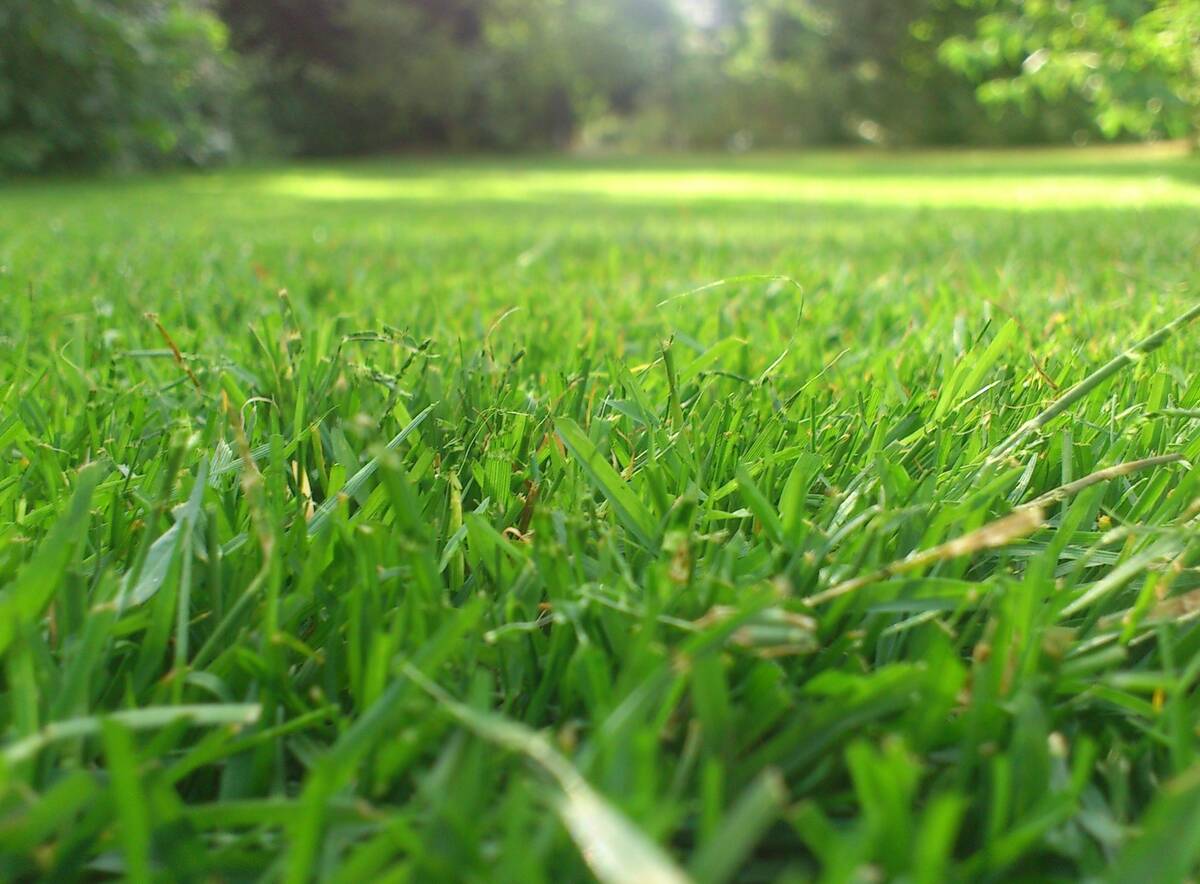
West Virginia is famous for its mountains. They define the state, with rugged land making a connection that gives folks pride as rugged people. So it is probably not a coincidence that by choosing the best grass seed for West Virginia, you can grow a rugged lawn that will withstand whatever comes its way.
If you want the main idea without mowing through the weeds, check out how to select the best grass type for West Virginia for a fast overview.
The Best Grasses for West Virginia: Cool-Season
The most common grasses in West Virginia, cool-season grasses grow and thrive in the cooler spring and fall seasons. These grasses may go dormant in the hot summer months without regular irrigation.
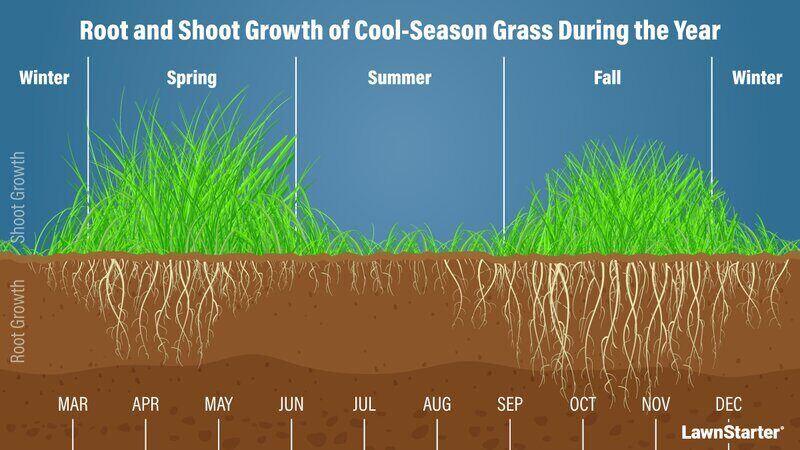
Fine Fescue
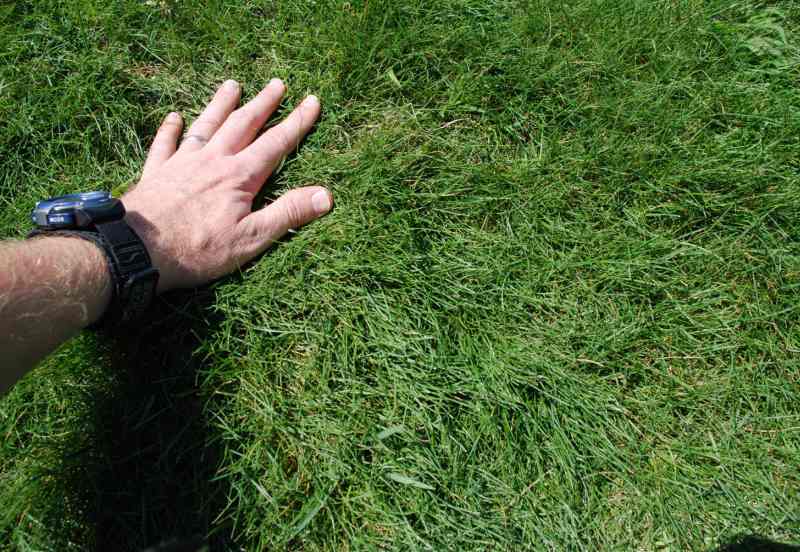
Aaron J. Patton, Ph.D. / Turfgrass Extension Specialist at Purdue University
Fine fescue grows great in the acidic soil of West Virginia, and has a wonderful shade tolerance. It crowds out weeds on its own and doesn’t need fertilizer or herbicide. It germinates in only 7-14 days.
But you can’t really use it. Foot or paw traffic will wear it out. It is a grass to look at.
And while you are looking at it, keep an eye out for pests. Fine fescue attracts a lot of them, especially white grubs, billbugs, and chinch bugs.
Classification: Cool-season grass
Spreads by: Creeping red fescue spreads by rhizomes, while other fine fescues are bunch-type grasses, such as Chewings, hard, and sheep fescues.
Shade tolerance: Moderate to High, depending on species
Drought tolerance: Moderate to High, depending on species
Foot traffic tolerance: Low to Moderate, depending on species
Maintenance needs: Low fertilizer and mowing needs
Mowing height: Set mowing height between 2.5 and 4 inches, depending on species.
Potential for disease: Moderate. Common diseases include red thread, leaf spot, dollar spot, summer patch, and powdery mildew.
Soil pH: 6-6.5
Soil type: Will not perform well in wet soil conditions. Prefers drier soils and tolerates a wide range of soil types and fertility.
Grass Seed Options:
– Outsidepride Legacy Fine Fescue Grass Seed (5 lbs.)
– Eretz Creeping Red Fine Fescue Seed (choose your size)
– Outsidepride Creeping Red Fine Fescue Grass Seed (25 lbs.)
– Outsidepride Hard Fine Fescue Grass Seed (10 lbs.)
Kentucky Bluegrass

Photo Credit: Shutterstock
Your feet will love Kentucky bluegrass. It feels so good to walk on. You will be tempted to take off your shoes just so you can feel it. You kids will love to roll around on it. Even your pets will seem happier.
But it doesn’t do well at all in the shade.
Kentucky bluegrass has a slow germination rate of 14-21 days and is best planted in the fall. But Kentucky bluegrass requires more maintenance than other grasses, needing more water, fertilizer, and mowing to look its best.
Classification: Cool-season grass
Spreads by: Rhizomes
Shade tolerance: Low
Drought tolerance: Moderate
Foot traffic tolerance: Moderate
Maintenance needs: Moderate mowing frequency and high fertilization needs.
Mowing height: Set mowing height between 2.5 and 3.5 inches.
Potential for disease: Moderate to high; prone to several diseases, such as dollar spot, leaf spot, necrotic ring spot, summer patch, and stripe smut.
Soil pH: 6-7.5
Soil type: Performs best in well-drained, heavy soils with high fertility.
Grass Seed Options:
– Jonathan Green (11970) Blue Panther Kentucky Bluegrass Grass Seed (3 lbs.)
– SeedRanch Midnight Kentucky Bluegrass Seed (5 lbs.)
Perennial Ryegrass
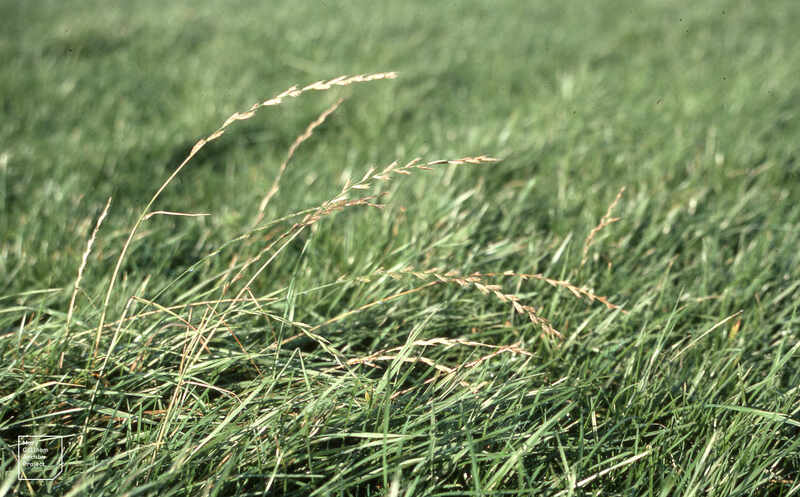
Photo Credit: Dr Mary Gillham Archive Project / Flickr / CC BY 2.0
Perennial ryegrass is a great grass to use. It can handle all the foot traffic you can offer, from kids playing to pets romping to friends and neighbors coming over for a lawn party. It germinates quickly (5-10 days) and is often used in a mix with Kentucky bluegrass to prevent weeds and stabilize the soil while the slower-growing bluegrass grows in.
But it doesn’t do well in acidic soil, which West Virginia is known for. It also struggles in the shade. A lot of landscaping professionals use it for overseeding warm-season turf in the fall to provide winter color.
Classification: Cool-season grass
Spreads by: Has a bunch-type growth habit
Shade tolerance: Low
Drought tolerance: Low
Foot traffic tolerance: High
Maintenance needs: Moderate mowing and fertilization requirements. Thatch is not significant.
Mowing height: Set mowing height to 1.5 to 2.5 inches
Potential for disease: High. Common diseases include gray leaf spot, red thread, and leaf spot/melting-out.
Soil pH: Can grow in soils with a pH between 5 and 8, but prefers between 6 and 7.
Soil type: Prefers good drainage and fertility, but can tolerate some poor drainage.
Grass Seed Options:
– Outsidepride Perennial Ryegrass Seed (5 lbs.)
– Eretz ProTurf Perennial Ryegrass Fine Lawn Seed (choose your size)
Tall Fescue

Aaron J. Patton, Ph.D. / Turfgrass Extension Specialist at Purdue University
Tall fescue grass has a deep root system, making it hardy and drought-resistant. It grows well in the full sun and well enough in partial shade. Tall fescue germinates in 7-12 days and has a lush, green color.
But it isn’t a grass to romp on, especially for the children; some varieties feel coarse or rougher than other grasses. It also needs a moderate level of maintenance. though it requires frequent mowing. But those things don’t stand in the way of golf courses using it; it is a favorite of them.
Classification: Cool-season grass
Spreads by: Produces short rhizomes but has a bunch-type growth habit
Shade tolerance: Moderate
Drought tolerance: Moderate to High
Foot traffic tolerance: Moderate
Maintenance needs: Frequent mowing. Does not produce significant thatch.
Mowing height: Set mowing height to 2 inches when grass reaches 3 inches tall.
Potential for disease: Tolerant of most diseases when properly maintained.
Soil pH: 5.5-6.5
Soil type: Adapted to a wide range of soil conditions, but prefers fertile clay soils with good drainage.
Pro Tip: To avoid a coarser feel underfoot, plant one of the improved, turf-type tall fescues for a finer-bladed lawn.
Grass Seed Options:
– Triple-Play Tall Fescue Grass Seed Blend (5000 sq ft)
– Eretz Kentucky 31 K31 Tall Fescue Grass Seed (choose your size)
– Pennington The Rebels Tall Fescue Grass Seed Mix (7 lb.)
The Best Grasses for West Virginia: Warm-Season
If you want a green summer lawn in the southern parts of the state, warm-season grasses may be your best bet. If you’re concerned about winter damage, choose a cultivar with good cold tolerance to minimize winterkill.
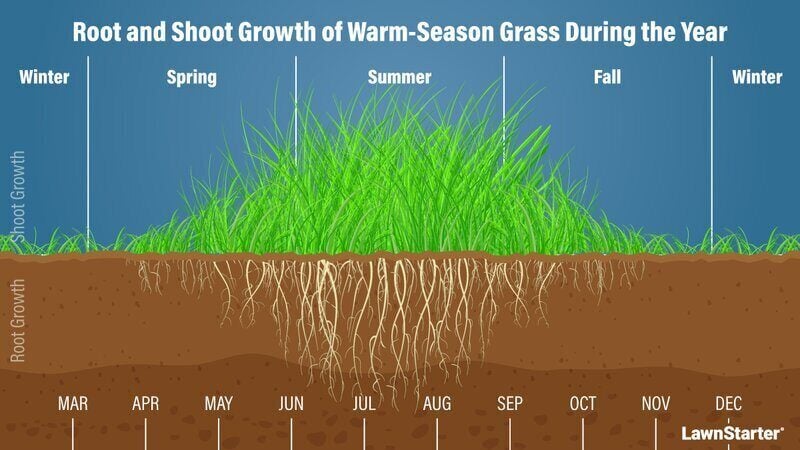
Bermudagrass
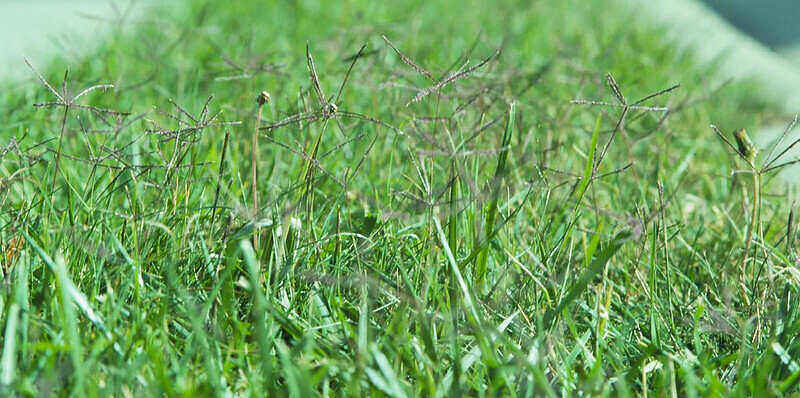
Photo Credit: Matt Levin / Flickr / CC BY-SA 2.0
Bermudagrass grows quickly, germinating in 3-7 days (or up to a few weeks in less than ideal conditions) and has an active root system in about 60 days. It spreads out and grows via stolons above the ground and rhizomes below it. It can handle West Virginia’s acidic soil and is the type of grass that can handle all the foot traffic your kids or pets can produce.
However, Bermudagrass needs a lot of sun. It also struggles in shade, such as you get from mature trees or buildings. Bermuda is an aggressive grass, so be prepared to mow often, fertilize regularly, and dethatch once thatch levels rise above about 1/2 inch.
Classification: Warm-season grass
Spreads by: Stolons and rhizomes
Shade tolerance: Low; thrives in full sun
Drought tolerance: High
Foot traffic tolerance: High
Maintenance needs: Needs frequent mowing due to fast growth rate; develops thatch easily; needs regular fertilization
Mowing height: Set the mowing height between 0.5 and 1.5 inches for hybrid Bermudagrass cultivars. Mow common Bermudagrass down to 1.5 to 2.5 inches.
Potential for disease: Good resistance to disease, although diseases are common; low resistance to insects
Soil pH: 6-6.5
Soil type: Tolerates most soil types
Grass Seed Options:
– Scotts Turf Builder Bermudagrass (10-lb. bag)
– Hancock Seed Co. Bermudagrass (50-lb. bag)
Zoysiagrass
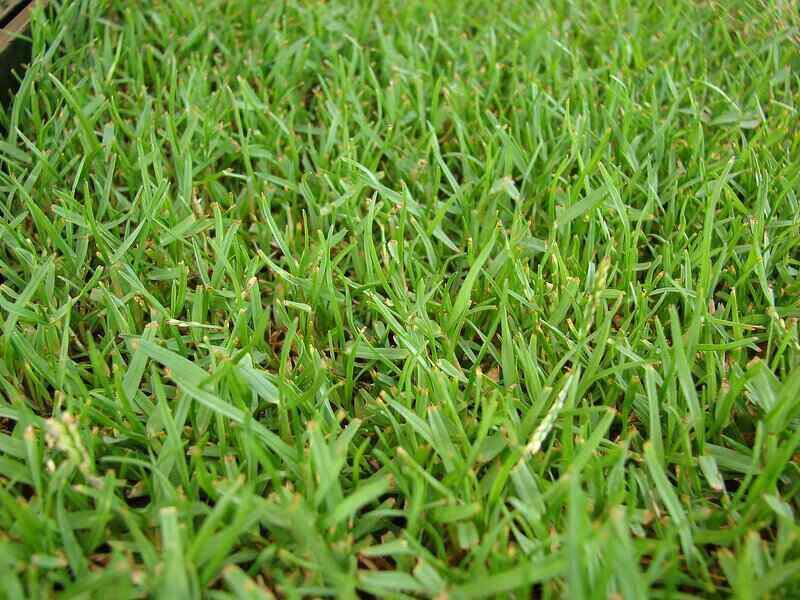
Photo Credit: Forest & Kim Starr / Wikimedia Commons / CC BY 3.0 US
Zoysiagrass is a warm-season grass that can also grow in cooler weather, but it will turn brown with the first frost of fall and become dormant during the winter. This grass will grow well in the acidic soil of West Virginia and is often used on golf courses.
Zoysiagrass is slow growing. Though it may take as few as 10 days to germinate, it may require three months or more to achieve full coverage on the lawn. It is usually recommended to use sod instead of seed to establish a Zoysia lawn due to its slow rate of growth.
A pro’s tip: Zoysiagrass has a wiry thickness that requires sharp blades on the mowers for a good cut. Be sure to sharpen your lawn mower blades before you mow.
Classification: Warm-season grass
Spreads by: Stolons and rhizomes
Shade tolerance: Moderate
Drought tolerance: Moderate to High
Foot traffic tolerance: High, but recovers slowly from damage
Maintenance needs: Low nitrogen fertilization requirements, although, it’s prone to thatch build-up.
Mowing height: Set mowing height between 1 and 2 inches.
Potential for disease: Good disease tolerance overall
Soil pH: 6-6.5
Soil type: Well-draining, some cultivars are more tolerant of a wide range of soils than others.
Grass Plug and Seed Options:
– Zoysia Plugs (50 Large Grass Plugs)
– Zoysia Plugs (50 Full & Lush Grass Plugs)
– Zoysia Plugs (100 Plugs)
– Zenith Zoysia Grass Seeds (1/8 lb. of seeds)
The Best Grasses for West Virginia: Native Grasses
If you want to make the effort to connect with the heritage of West Virginia, there are native grasses you can turn to. When the first European settlers arrived, and before they started installing the grasses they knew from other places, the ground was dominated by:
- Big bluestem (Andropogon gerardii Vitman). It once dominated across the nation, but has been reduced to patches. As people rediscover it, they find it has an extensive root system (one reason why it once flourished) and grows aggressively.
- Little bluestem (Schizachyrium scoparium). One of the most important native grasses throughout the eastern U.S., it grows through the winter, often providing the seeds that little birds need to survive.
- Indiangrass (Sorghastrum nutans). It is known for forming sod and being a favorite food of animals, both livestock and wild ones. It would bounce back from both flooding and burning.
- Switchgrass (Panicum virgatum). It is one of the dominant native species in the U.S., in part because it can survive winter. It evolved into an excellent grass to grow along roads.
Note: The grasses above are ornamental grasses, not lawn grasses, and are best used in ornamental beds in your landscape.
Challenges to Growing Grass in West Virginia
The mountains that make West Virginia famous receive a lot of snow, over 100 inches per year in a state that on the whole averages 33 inches. All that snow coming off the mountains contributes to final frost dates coming in late April … and sometimes May.
If you want to plant cool-season grass in the spring, you might not have enough time for it to establish before the heat of summer. You should think in terms of planting cool-season grass in the fall. But you want the seed to establish before the first frost, which in West Virginia will come in October. Keep that in mind when you decide on the date you want to put down the seed.
Interested in seeding a warm-season lawn? Late spring or early summer is the ideal time to seed warm-season grasses.
Frost Dates and the Growing Season
In part because of the mountains, West Virginia has both late frost and early frost:
- Last frost. May 1-15 for most of West Virginia. April 16-30 for small areas in western and eastern parts of the state. May 16-31 for a pocket in central West Virginia.
- First frost. October 1 to 15 for most of West Virginia. October 16-31 for a small area in southwestern West Virginia, September 1-30 for a pocket in the eastern part of the state.
With those frost dates, West Virginia has a growing season of about 160 days, with some areas as short as 120 days. In a good year, some areas might reach 180 days.
Soil in the State
West Virginia is known for its shallow, acidic clay soil. It dominates the mountain regions in the eastern and southern sections, making them especially difficult to grow in.
However, the soil in the river floodplains, which is where most people have their homes, is quite good. The soil along the Ohio River that forms the western border of the state is excellent.
In 1997, West Virginia designated their state soil as Monongahela silt loam. Described by the U.S. Department of Agriculture as a very deep, moderately well-drained soil, it is found on 100,000 acres in 45 counties in West Virginia. West Virginia is famous for it. But it is also slightly acidic, something to know when you are selecting a grass for you.
Droughts Do Happen
West Virginia suffered major droughts in 1930-31 and 1988, plus others in 1941, 1954, and 1966. In the 21st century, there have been drought conditions, but five of the 10 wettest years ever recorded came in the same period, holding off drought.
Climate in West Virginia
| Yearly Average | West Virginia | U.S. |
| Rain | 45 inches | 38 inches |
| Snow | 33 inches | 28 inches |
| Precipitation (at least .01 inches on the ground) | 145 days | 106 days |
| Sunny days | 164 days | 205 days |
Source: Best Places
Growing Grass in the Transition Zone
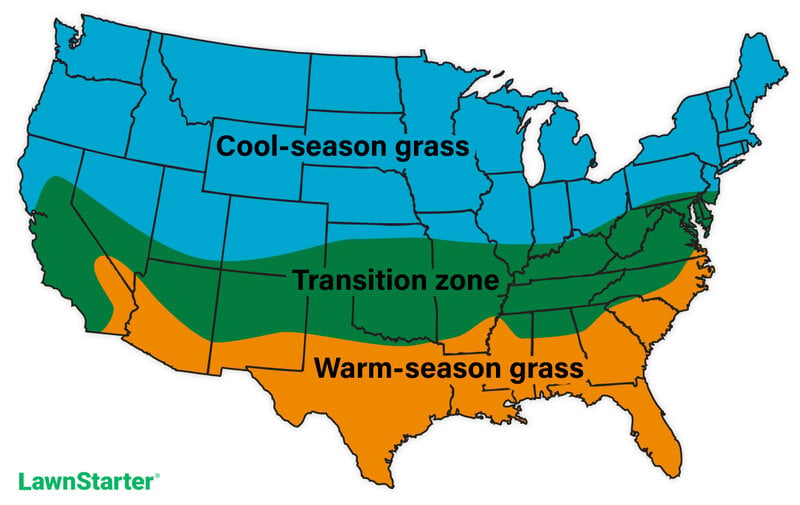
When selecting a grass to grow on your lawn in the transition zone, a LawnStarter study emphasized the importance of evaluating your yard and provided tools to do it:
- Check the soil pH: Know the basics of preparing and sending out a soil test.
- Find the soil type: Knowing your soil type will enable you to properly prepare the soil before you plant.
- Calculate sun exposure as it moves across your yard on a normal day, especially the times of full sun or levels of shade.
How to Select the Best Grass Type for West Virginia
Can the Lawn Be Used?
The kids can run wild on it: Bermudagrass, perennial ryegrass, Zoysiagrass
You can invite the neighbors over: Kentucky bluegrass, tall fescue
A grass to look at, not really to walk on: Fine fescue, big bluestem/little bluestem/Indiangrass/switchgrass
How Often Does It Need Mowing?
It’s a mistake to take a week off: Bermudagrass, tall fescue, Zoysiagrass
It doesn’t grow that fast for lawn grass: Kentucky bluegrass, perennial ryegrass
The growth is slow: Fine fescue, big bluestem/little bluestem/Indiangrass/switchgrass
What Are the Maintenance Needs?
A high-maintenance grass: Bermudagrass, Kentucky bluegrass
It can’t be ignored, but you can get to it when you can: Zoysiagrass, perennial ryegrass, tall fescue
It is what they mean by low maintenance: Big bluestem/little bluestem/Indiangrass/switchgrass, fine fescue
What if it is in Shady Areas?
You can plant it under trees: Fine fescue
It should be fine, but check it: Tall fescue, Zoysiagrass
Not made for the shade: Bermudagrass, Kentucky bluegrass, perennial ryegrass, big bluestem/little bluestem/Indiangrass/switchgrass
If you have shade on your lawn, check out our guide on How to Grow Grass in the Shade.
Droughts Are a Threat in West Virginia
Grass that should survive: Fine fescue, tall fescue, big bluestem/little bluestem/Indiangrass/switchgrass, Zoysiagrass
It might go dormant, but it will recover: Bermudagrass, Kentucky bluegrass
Needs water: Perennial ryegrass
Might it Attract Diseases?
It happens a lot: Perennial ryegrass
Be aware of the signs: Kentucky bluegrass
Should be fine: Fine fescue, big bluestem/little bluestem/Indiangrass/switchgrass, Bermudagrass
You don’t have to worry: Tall fescue, Zoysiagrass
How Does it Do in Areas Washed by Road Salt?*
Moderate to high salt tolerance: Bermudagrass, Zoysiagrass, big bluestem/little bluestem/Indiangrass/switchgrass, slender creeping red fescue
Should be okay (moderate tolerance): Perennial ryegrass, tall fescue, strong creeping red fescue
Struggles: Kentucky bluegrass, Chewings fescue, hard fescue, and sheep fescue
*Some tolerances vary widely depending on the cultivar
A Call to Action
West Virginia has challenges when it comes to growing a lush lawn. Those challenges can be overcome, but you can’t be casual about it. You have to take action.
You have to decide what grass is the right grass for you, and you have to maintain it. It is the kind of do-it-yourself project that is rewarding and energizing to homeowners. But it might also be a commitment of time and expertise that you don’t have on your own. Whichever it is, you have to make that decision, and act on it.
Looking for a West Virginia lawn care pro near you? We have trusted lawn care pros in Charles Town, Harpers Ferry, Huntington, and many more cities across the state.
Additional sources:
Rhode Island Dept. of Transportation
Main Image Credit: Shutterstock
LawnStarter participates in the Amazon Services LLC Associates Program, an affiliate advertising program. LawnStarter may earn revenue from products promoted in this article.

